READY TO GET STARTED?
REQUEST A FREE ESTIMATE
Fill out the form below or call (888) 466-7849 for a free, no-obligation estimate.
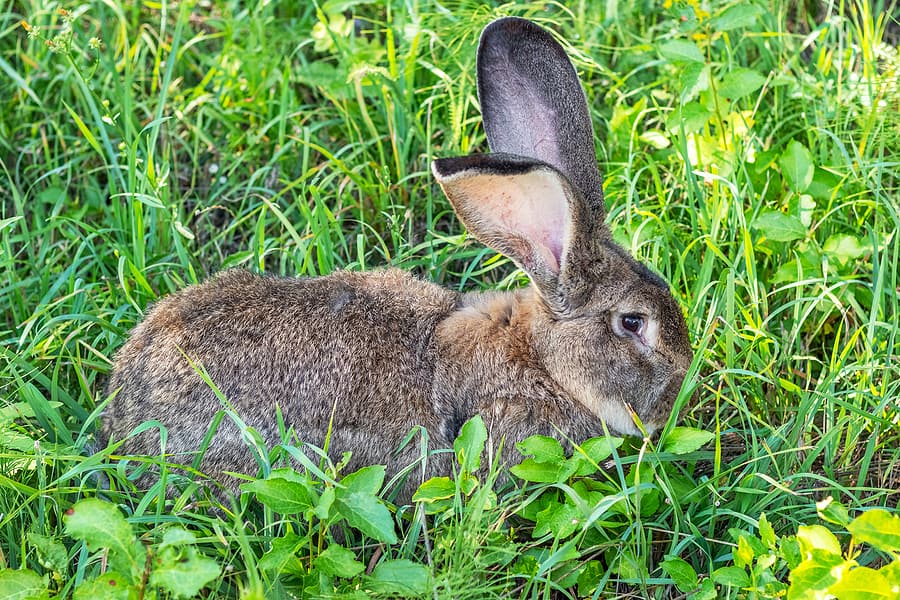
While some may have an idyllic picture of wildlife on their property (deer roaming across their yards, cute bunnies hopping through the garden), these nuisance wildlife can decimate your lawn or garden overnight. Squirrels digging holes, deer eating shrubs, and rabbits chowing down on your vegetables can leave you with a mess to deal with. If you don’t want to have to share your outdoor living space with these pests, consider these simple wildlife exclusion tips to prevent wildlife from taking over your yard.
The first step in wildlife control is identifying which critter you have.
Wildlife are less likely to hang out in your yard if they don’t have a place to hide. Getting rid of wood piles, brush, and overgrown shrubbery will eliminate the majority of their hiding spots. Open spaces and neatly trimmed flower beds help to discourage them, especially rabbits and groundhogs.
Another thing wildlife look for in your yard is a food source. Getting rid of their food or discouraging them from it will go a long way in keeping them out. Fill your garden with plants that deer and rabbits dislike. Pick any edible fruits and vegetables as soon as they are ripe. Collect fallen fruit and nuts before the squirrels can get to them. Don’t leave pet food sitting out overnight. Strap or bungee trash can lids onto your cans.
There are several plants you can include in your landscaping that help deter wildlife. Most animals will be repelled by the smell of garlic plants. Daffodils are a pretty addition to your garden but most animals dislike the bitter taste of their leaves. Lavender is great for repelling deer and rabbits. Marigolds work well at repelling moles. You can also use distasteful substances to spray or sprinkle around your garden or individual plants to help repel wildlife. Some substances that are effective include hot pepper extract, predator urine, castor oil, garlic clippings, cayenne pepper, putrid egg whites, and coffee grounds.
Putting deterrents in your yard can help scare these pests away. Dogs who have free run in your yard are great at keeping these wildlife away. You can also use noisemakers, motion-activated sprinklers and lights, automated sprinklers, garden spinners, decoy animals, and pinwheels to help scare them away.
You can also keep wildlife at bay by making it physically impossible (or at least much more difficult) for them to get into your yard or garden. You can put up a barrier to protect your yard or even individual plants you want to protect. Netting or chicken wire around plants or a wire cloche over plants can protect them from rabbits, groundhogs, squirrels, and deer. Putting electric fencing around your vegetable gardens can exclude most wildlife as long as they can’t go over or under it. To keep deer out, fences should either be extremely high (8 feet or taller) or short, doubled, and wide (such as 2 shorter fences spaced 5 feet apart). Use sturdy wire or hardware cloth to close any openings under your shed and deck to help keep out rabbits and groundhogs, Make sure to bend the wire into an L-shape and bury it several inches under the ground to keep them from digging underneath it.
If you have a problem with wildlife, contact your local wildlife control company who can help you identify which type of pest you are dealing with and provide you with the best wildlife exclusion methods for your situation.
How Common is the American Cockroach?
5 Winter Lawn Care Tips for Southern Homes
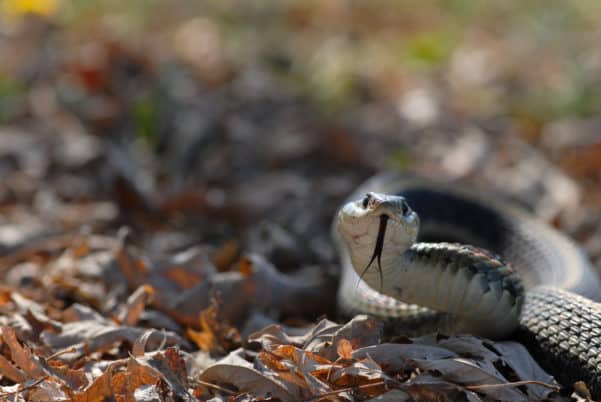
As the weather continues to warm up, snakes start to become more active and on the move in search of food. Most homeowners can agree that they fear finding snakes in the yard. But while most of us don’t want snakes hanging out on our property, it’s important to note that these wildlife creatures are beneficial to have around as they can get rid of other pests infesting your property. Instead of eliminating these creatures, every homeowner can take simple preventative measures to encourage them to find a different location to habitat.
Ensuring that your yard is well-kept up is one of the easiest and simple ways to deter snakes from your property. Debris and leaf piles are a huge attractant to rodents which will then attract snakes. The leaf piles are additionally a great place for snakes to hide out in. Make sure you are cleaning up any debris piles, including sticks, brush, and tree limbs from your yard.
Overgrown trees and shrubs provide cover and shelter for snakes. Make sure that you are trimming your overgrown trees and shrubs, so they are not touching the house or garage. Don’t forget to trim the branches off the ground so there is at least 24” to 36” space underneath. This helps eliminate a place for snakes to take cover, but also makes them easier to spot.
You might not be aware, but certain items are placed in your yard that could be attracting snakes. While many love to have decorative birdhouses and bird feeders in the yard, they can attract snakes. Some snakes are great climbers and will climb up to feast on the birds feeding on the feeders or living in the birdhouse. Consider placing the birdhouse or feeder on a metal pole or wood post, with the post wrapped in metal sheeting.
A perch pole is a great alternative to help keep snakes away from the property. Owls or hawks are natural predators to snakes and will use the installed perch pole. Make sure that the pole is in an open area in your yard, so the birds can have a good view of the entire area.
Though, sometimes it’s just best to install fencing to help keep snakes out. If you decide to install fencing, make sure that it’s buried a few inches into the ground and should be made up of ¼” or smaller rigid mesh. At the top of the fence, make sure that it bends to keep snakes from climbing over it.
If you’ve tried all the prevention tips you can to deter snakes away from your yard but it’s not working, it might be time to call your local wildlife control company. These professionals can help establish a regularly scheduled service and treatment plan to help with your snake problem.
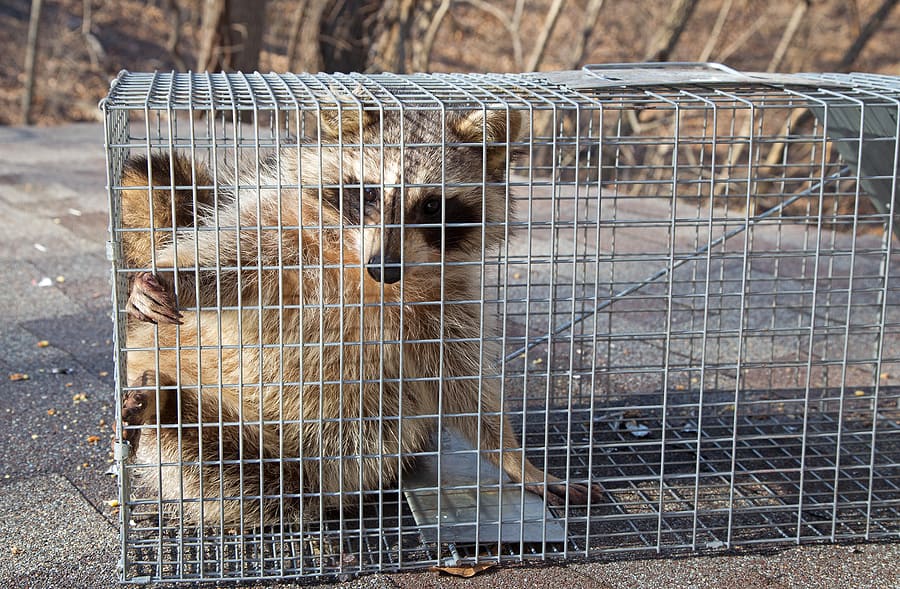
A nuisance pest (also referred to as nuisance wildlife) is any animal that interferes with other human activities or that is menacing or destructive; for example, animals that eat our birdseed, dig up gardens or landscaping, populate a place where they are unwanted (like your attic), damage buildings and public parks, or threaten human health and safety by spreading diseases, directly attacking us, or colliding with cars, planes, and trains. Some common nuisance animals include opossums, raccoons, moles and voles, bats, birds, deer, and skunks.
Studies have shown that deer vs car collisions cost Americans $1 billion per year. Birds vs airplanes also cost the same amount of damage annually. Squirrels, beavers, and other similar nuisance pests cause millions of dollars in damage to roadways, bridges, and dams each year. These creatures can also threaten already endangered species.
Wildlife in general search for 3 main things necessary for survival: food, water, and shelter. As human development spreads, interactions with wildlife will become more frequent. Competition for food, water and shelter will increase, making them more daring in their quest for survival. As they become accustomed to the proximity of humans, they will continue to adapt and increase their populations.
So what can you do to help prevent nuisance wildlife? The first step is to identify the pest you are dealing with. Federal and state laws protect most wildlife and regulate which species can be trapped, hunted, harvested, or harmed. In fact, all native birds are federally protected and some non-native species (including the house sparrow, European starling, and domestic pigeon which are all considered nuisance birds) have federal protection, as well. It is illegal to hunt, pursue, take, capture, kill or possess any migratory bird, nest, or egg.
Once you have identified the animal you are dealing with, the next step is to treat the problem, not the symptom. By removing the 3 things wildlife are searching for (food, water, and shelter), they will go elsewhere in their search. If a nuisance pest is eating your dog’s food, don’t just trap or relocate the offending animal. Store the dog food in a lidded container and take the bowls in overnight.
The University of Georgia Wildlife Extension recommends the following steps to prevent nuisance wildlife from taking over your yard.
One of the best ways to prevent wildlife is to make your yard or home undesirable to them. Once you identify the type of animal you are dealing with, do some research and learn their habits and preferences and modify your home or yard to make it more unattractive to them. Remove anything they can use for cover. Keep tall grass mowed short; remove piles of brush, logs, rocks, debris, firewood, trash, bricks, buckets, flower pots, old cars, used tires, and toys. Use an herbicide to get rid of weeds, briars, and vines. Cut away dead trees and limbs as these provide nesting and roosting spots for nuisance birds and bats.
Harassment is another prevention method you can use where you disturb or scare the wildlife away from your property. The effectiveness of harassment depends on the diligence of the homeowner. These methods must be utilized on a regular basis and moved frequently (every few days) otherwise the animals become accustomed to them and they are less effective. Tactile harassment methods include water spray and motion sensored sprinklers; light methods include bright lights, strobes, and lasers; and scare methods include eye balloons, scarecrows, silhouettes on windows, predatory figurines, and pyrotechnics.
Wildlife exclusion refers to utilizing physical barriers to keep wildlife out of your yard or home, usually through fencing or other materials. This is one of the best options for nuisance wildlife. All fencing should be staked or secured firmly to the ground. For large animals such as hogs, dogs, or deer, welded wire, chain link, or wood fencing is preferred. If you have a problem with deer, the fencing should be at least 8 feet tall. Smaller animals like opossums, raccoons, foxes, and squirrels do better with chicken wire, hardware cloth, or electric fence that is at least 2 feet tall and buried 6″ to 12″ into the ground.
Exclusion from your house is also possible. Cap chimneys to prevent raccoons, bats, birds, and squirrels. Keep soffit vents in good repair and screened to prevent insects, birds, and bats. Use hardware cloth or screens that still allow airflow to protect the gabled ends of homes or barns to keep out squirrels, bats, and birds. Keep windows and doors, including those to garages and sheds shut and make sure they have proper sealing and that screens and weather seals are in good repair to prevent snakes, bugs, mice, raccoons, and opossums. Cover dryer vents with a screen and clean them regularly to prevent snakes and mice. You can also seal around them with expanding foam or weather seal. Finally, prevent mice and bats from getting in around electric lines, phone lines, cables, and pipes by sealing them with expanding foam or weather seal.
Removal and relocation of nuisance wildlife is discouraged as it can oftentimes be illegal. You can remove these pests from your home and release them onto your own property but steps must be taken to seal off entry points back into the home to keep them from coming back in. It is illegal to relocate nuisance pests onto someone else’s property. This option is usually deferred to a professional wildlife company who is familiar with trapping and relocation laws in your area.
Repellents can also be utilized to keep out offensive animals. Research shows that most soundwave repellents are not very effective at keeping animals at bay. The most effective repellents are those that use taste, fear, and odor. Different species respond to different repellents so identification of your problem critter is essential. The success of repellents depends on timing, how many of those types of animals are present, how hungry they are, and if they have been conditioned prior to coming onto your property. In general, the most effective methods combine repellents with physical barriers.
Lethal control of nuisance wildlife requires permits from federal and/or state wildlife agencies. While these permits can be given to non-professionals, it is not recommended due to the risk of bites, rabies, and other diseases that can be spread by these animals.
If you have a problem with nuisance wildlife, contact a local pest control company that specializes in wildlife control so they can help properly identify the animal you are dealing with and provide the most up-to-date, safe, and legal exclusion methods for your situation.
Overwintering Pests: Boxelder Bugs and Ladybugs
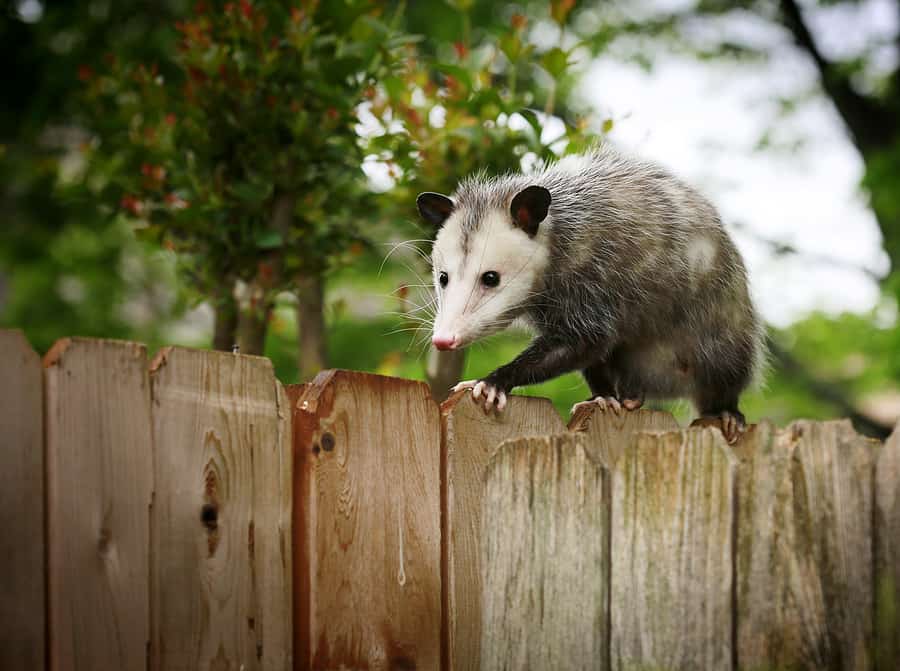
It’s minutes before you have to run out the door and make your commute to work. You make your coffee and look out the window, only to see last night’s dinner scattered throughout your yard! Unfortunately, your garbage has been rummaged through all night by a couple of wildlife pests. Two popular animals that are known to forage through trashcans and dumpsters for food are raccoons and opossums.
Raccoons, known for their distinctive black mask coloring on their faces, can range from just under 2 feet long to over 3 feet long. These animals are considered nocturnal and are rarely seen by humans. Be aware, though, spotting a raccoon during the day can be a possible sign they have rabies or other abnormal conditions.
Raccoons are scavengers, looking for food wherever they can find it, often foraging in trashcans and dumpsters. These skillful creatures can easily use their paws to open doors and lids to look for food. While they are omnivores, they prefer fruits and nuts over meat. Because they are creatures of habit, once these animals find a food source at your home, they will keep coming back until the food source is gone.
Another animal you’ll catch roaming around your trashcans is the opossum. Grey in color, opossums can range from 14” long to over 3 feet long, with their tails making up 50 percent of their total body length! These animals also tend to live near wet areas such as swamps and marshes.
While opossums are omnivores, they prefer insects and carrion over fruits and vegetables. As highly skilled climbers, you’ll find these creatures in trees, staying up there for as long as they can. They are also slow movers so don’t expect them to make a quick getaway! Opossums are generally not aggressive, though they will play dead if they are threatened.
Here are some tips to help prevent wildlife from rummaging through your garbage.

With the warmer weather ever so present, it’s the perfect time to take up or get back into gardening if it’s been a while. Though, gardens can benefit your entire family, they can also be a major attraction to pests and wildlife. Birds such as crows, pigeons, sparrows, robins, and starlings are a few that are drawn to food sources found around your home. Fortunately, there are some easy DIY prevention tips to help prevent birds from destroying your fruits and vegetables!
If you need a quick and easy way to keep birds away, you can place everyday objects found in your home around or in your garden. Objects such as, CDs, aluminum cans, tin foil, small mirrors, or even metallic wrapping paper can discourage birds from entering unwanted areas. Light reflections discourage birds from returning to these areas. Aluminum foil is one of the easiest and cheapest ways to keep birds away. Birds typically don’t like the feeling of foil under their beaks. Place strips of aluminum foil from trees or high points around your garden.
A fun and decorative approach to keeping birds away is to invest in some garden balls. Garden balls are a natural bird repellent that are round and colorful. They can be placed in or around your garden or hung in trees, fence posts, and stakes. Garden balls are multipurpose, as they are great for decorating your garden but will also confuse birds away from the area.
Another method is to place bird spikes around your home and garden. Bird spikes are long, needle-like rods used to keep birds away from certain areas. Birds find these spikes very uncomfortable and will avoid landing on them. You can also create these spikes by using plastic cans and place them in the dirt or attach them to the wire of windowsills, overhangs, or fences.
If you try these DIY methods but still have issues with birds, you should contact your local pest control company who specializes in wildlife control. They will be able to evaluate and determine the best measures to prevent birds from returning.
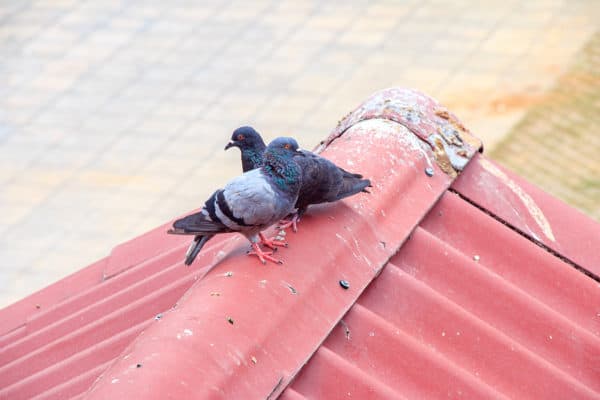
Some birds are beautiful and fun to watch, while others can be downright annoying and destructive. While birds aren’t typically considered a nuisance pest, they can become a problem when their nests obstruct important areas in your house, their droppings carry transmittable diseases, or they get into your attic or chimney.
Understanding what nuisance birds are attracted to is the first step in helping to prevent them. Pest birds such as crows, pigeons, sparrows, robins, and starlings are attracted to food sources they can find around your home (insects, earthworms, corn, seeds, and rotten fruits and vegetables). Woodpeckers are also a common nuisance bird and will drill into your trees in search of carpenter ants, beetles, and other wood-boring insects.
Birds can be attracted to pet food which is often left outside all day for them to feast on. Birds also require water to survive and will use your fountain, water feature, or any other standing water on your property as a birdbath.
While professional bird control is always an option, there are some bird prevention tips you can use at home to help keep birds away. Here are 5 of our favourite DIY bird-repellent methods.
If there isn’t anything in your yard to attract birds, they will be less likely to hang around.
Most birds require freshwater to survive. Substitute saltwater for freshwater in your fountains and water features so birds won’t be able to drink from them. If you feed your pets outdoors, remove or cover their food and water dishes as soon as they’re done with them. Make sure pet food is kept in airtight containers.
Birds also like to take cover in grass and other landscaping, especially in windy or stormy conditions.
Make sure grass is kept mowed, and hedges and trees are kept trimmed to help reduce cover. If you see a bird actively building a nest, use a long stick to dismantle it. Once you do this a few times, the bird will move on to a new nesting site.
If the nest is already built or occupied by the bird, don’t attempt bird nest removal yourself. There are laws in each state regulating the removal of bird nests. Contact a professional wildlife exclusion company to help properly remove or relocate the bird’s nest in question.
One of the easiest and cheapest natural bird repellents is aluminum foil. There are several different ways you can use aluminum foil to keep birds away. If birds are disturbing your garden, you can place strips of aluminum foil under the surface of the dirt or around any plants they are bothering. Birds don’t like the feel of the foil under their beaks and will stay away.
You can also hang strips of aluminum foil (or shiny party streamers) from the trees or other high points around your home and garden. The sun reflects off the shiny surface and bothers their eyes, deterring them from coming near. If woodpeckers are around, hang an aluminum pie plate on the tree where you see them most often. The reflection of the plate will scare the woodpeckers off.
If birds are constantly landing in or near your pool, try running fishing wire high over the pool in a criss-cross pattern. You can hang it between 2 trees, between eaves, or from any other high locations you might have near your pool. The birds don’t like the impediment to their flying space and will find somewhere else to land. As a bonus – you won’t be able to see the clear fishing wire from the ground so it doesn’t take away from the aesthetics of your backyard space.
If pigeons and other nuisance birds are invading your patio space or window sills, try sprinkling baking soda anywhere they like to perch. Birds don’t like the feel of the baking soda under their toes and will avoid it at all costs. You can also use double-sided duct tape instead of baking soda.
If birds are a problem around your garden, pool, or deck, you can purchase one (or several) predator decoys at your local hardware store to scare them away. As the birds fly overhead, they will see the plastic owl, rubber snake, or whichever other decoy you choose and won’t land near it. Just make sure you move your decoys around often or the birds will get used to them and realize they aren’t real.
The more deterrents you have around your property, the less likely you are to have birds hanging around. If these methods don’t work or you already have an existing bird issue, contact a professional bird control company who can help you safely and effectively remove the nuisance birds and put measures in place to prevent them from coming back in the future.
How to Avoid a Rat Invasion During a Pandemic
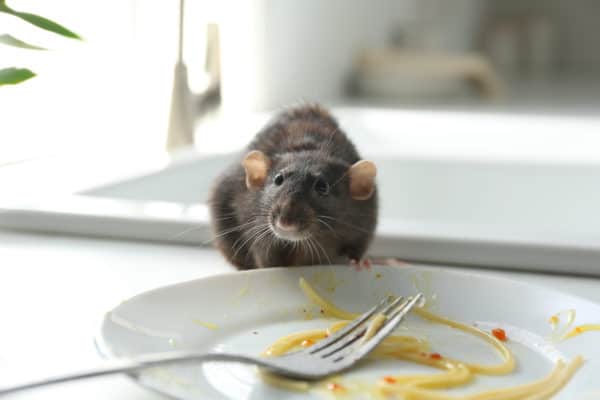
As the corona virus continues to spread, people around the world are drastically changing their daily routines. Tourism has come to a grinding halt. Restaurants are closed and people are staying home. What many don’t realize is this change in our daily lives is also affecting the ecosystem within cities. As there is less urban traffic, there is less food for pests and rodents – like rats. According to experts, if rats lose these established food sources (e.g. trash in cans in the park or dumpsters outside restaurants) then they will start fighting over any food that remains, even going so far as to kill each other in order to survive.
Because rats are having to get creative in finding new food sources, there is now a trending surge of rats invading homes and essential businesses in search of their next meal. Rats will follow the smell of food into homes, being as bold as necessary to find food in their effort to survive. Rats in homes pose serious risks – they will chew through wires and cables putting you at risk for fires and they carry diseases of their own which can easily be transmitted to you and your family. While there is no evidence that rats themselves can become infected with corona virus, there is some risk for spreading it to humans. Rats are known to crawl through sewer pipes containing human feces which has been shown to contain the virus. They then make their way into your home and contaminate any surfaces they touch with the virus-laden feces, potentially allowing humans who come in contact with these contaminated surfaces to contract the virus. The CDC reports that although this scenario is possible, the risk of transmission by feces is actually quite low.
To protect your family and/or essential business, the following rat prevention tips can help to prevent a rat infestation, limit the spread of disease, and keep your environment a safe-haven, during shelter-in-place orders and in the future:
If you notice a rodent problem in your home or essential business, contact a professional pest control company. Rats can cause serious health risks to your family or employees, as well as the risk for fire and other structural damage to your home and property. A licensed wildlife exclusion company will inspect your home to identify your animal problem, determine where they are getting in, remove them, and prevent the animals from getting into your home in the future. They can also inform you of any existing damage or contamination and provide you with a recommendation for repairs or clean-up.
5 Things That Could Be Attracting Termites to Your Home
Summer Wildlife Removal: Common Home Invaders
What is the Difference Between Traditional and Green Pest Control?
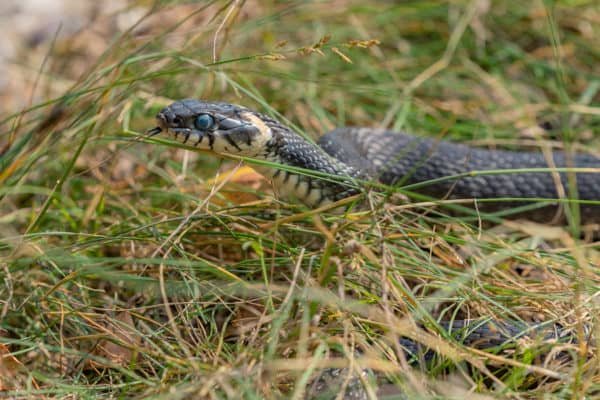
If you live in an area where snakes are common, chances are you may stumble across one at some point. Snakes, like any other pest, are usually in search of three things: food, water, and shelter. Oftentimes the area around our homes provides all of these things that attract snakes.
The likelihood of a snake on your property depends on several factors, including location (north vs south), landscape (urban vs rural), a nearby water source (pond, lake, river), how well your lawn is landscaped and maintained, and how readily a food supply is available.
When dealing with snakes, it is important to identify the type of snake you are dealing with: venomous snakes should be left to a professional to eliminate while non-venomous snakes can often be deterred with natural snake repellent techniques. Here are 4 ways to keep snakes out of your yard:
One of the easiest ways to scare off a snake from your yard is to use your garden hose. Spray the snake with a steady stream from the hose until he slithers off. Consider installing a perch pole for hawks, owls, and other natural snake predators to alight on. Be sure to place it in an open area so the birds have a good view of your yard and the surrounding area.
There are some natural products and at-home techniques you can use for snake prevention. Ammonia is a common snake repellent. Snakes hate the smell of ammonia and won’t come near it. Soak rags in ammonia and place them in unsealed plastic bags. Leave the bags where you usually see snakes to keep them away.
You can also use vinegar to keep snakes and other pests out of your swimming pool. Pour white vinegar around the perimeter of the pool. Snakes can absorb the vinegar through their skin, so they will avoid slithering over it once it’s poured on the ground. Snakes also try to avoid humans at all costs. Save hair from your hairbrush and scatter it around the perimeter of your property to help keep snakes away.
Snakes will come into your yard in search of food, water, and shelter. Eliminating these three basic necessities will make them much less likely to pay you a visit. Mow your grass often and keep it cut short. Shorter grass means more exposure to predators like hawks and coyotes and also makes them much easier for you to spot.
Avoid overwatering your lawn, as this can attract snake food sources like frogs, worms, and slugs. Keep trees, shrubs, and branches trimmed away from the sides of your house, the roof, and the ground. Try to keep a 24 to 36-inch space cleared under trees and shrubs, as this reduces the chance of snakes using them for cover and makes them easier to spot. Move bird feeders away from the house or get rid of them altogether.
Birds often leave seeds scattered underneath which attracts rodents that, in turn, attract snakes. Keep bird seed and pet food stored in metal cans with tight-fitting lids.
Make sure your woodpile is kept away from the home and elevated if possible. When designing your landscaping, try not to use mulch or large rocks, as these create breeding grounds and overwintering habitats for snakes. Instead, try to use smaller, tight-fitting rocks like gravel or river rock. Also, try to avoid using water features and Koi ponds as the water can also attract snakes.
Snakes can be very persistent pests, and keeping them out can be difficult. Carefully inspect the outside of your home and seal any cracks or crevices you find on the house, sidewalk, and foundations. Consider installing fencing around your yard, garden, or pool.
Fencing should be buried a few inches into the ground and constructed using 1/4″ rigid mesh or solid sheeting. Fencing should also include a bend at the top to prevent snakes from climbing up and over. There are some companies that even make wildlife-specific fencing.
The best way to prevent snakes is to take steps to keep them out in the first place. Dealing with snakes can be dangerous, depending on the type of snake you have. If you have a snake problem, contact animal control or a professional wildlife control company that can help safely trap, relocate, or remove the nuisance snake from your home.
What You Should Know About Termites This Spring
Where Are These Stinkbugs Coming From?
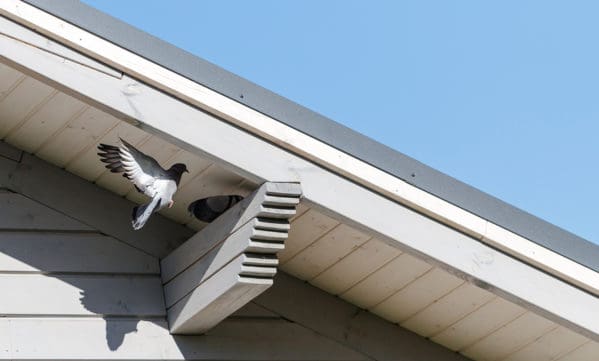
While most birds aren’t considered parasites, they can become quite a nuisance. Birds can be helpful in some ways: feeding on predator insects and eating the seeds of pesky weeds that can overtake your garden; but birds can also be pests by feeding on the fruits and veggies in your garden, causing damage to your home and other structures on your property, and leaving droppings that can lead to serious health risks to you and your family. Because it is illegal to kill most species of birds and remove or destroy the nests of other species, homeowners are only left with a few options when it comes to bird control: natural repellents that deter birds away from certain areas around your home and professional wildlife exclusion to safely and humanely remove or relocate nuisance birds. Here are five home remedies to keep birds away:
Shiny, reflective objects make great deterrents for problematic birds. The reflection of light off of these objects discourages birds from returning to these areas. These shiny objects, such as old CDs, aluminum cans, tin foil, small mirrors, or even metallic wrapping paper, can be hung near nesting or landing areas frequented by the problematic birds.
Birds have many natural predators including cats, owls, and larger birds of prey. Placing objects in the shape of these predators around areas frequented by nuisance birds can deter them from nesting or landing near them. These objects can be made of wood, metal, or any other material that can withstand the outdoor environment. Make sure to move these objects around every few days or the birds will get acclimated to them and begin to ignore them.
Round garden balls, which are large colorful balls that can be placed in your garden or hung from trees, fence posts, and stakes are a natural bird repellent. Birds will confuse these spherical orbs with eyes and try to avoid them. They also can be great decorations for your yard or garden.
Bird spikes are long, needle-like rods used for bird control. These spikes can be made of tin or plastic cans and placed in the dirt or attached with wire to window sills and overhangs. They can also be made by hammering nails into wood. Birds find these spikes uncomfortable and won’t land on them, keeping them away from problematic areas around your home.
There are several versions of bird repellent sprays you can make at home but the most popular is a concoction of chili peppers, water, and vinegar. To make this spray, crush dried red or green chili peppers into a mixture of water and vinegar. This mixture can either then be heated in a crock pot for a few hours to infuse or placed in a clear glass in the sunlight for a natural infusion. Once finished, place the repellent in a plant mister and spray any areas where birds are causing problems.
If you try these home remedies and you still have an issue with birds, your other option is to contact a professional pest control company who specializes in wildlife control who can come and thoroughly evaluate your home to help determine not only the species of bird you are dealing with, but also the best course of treatment that is both legal and effective.
New Year, New Termite Protection
6 Things You Should Know About Ants in the Kitchen